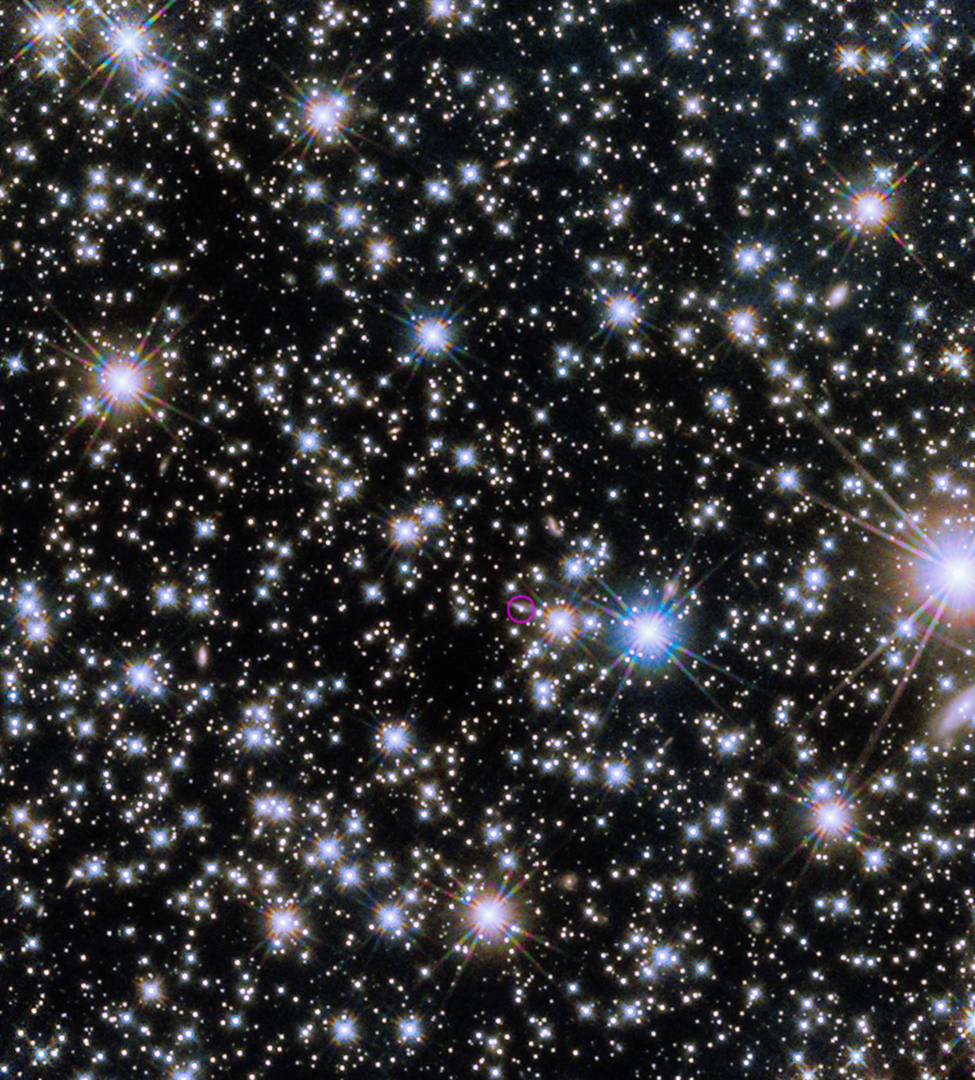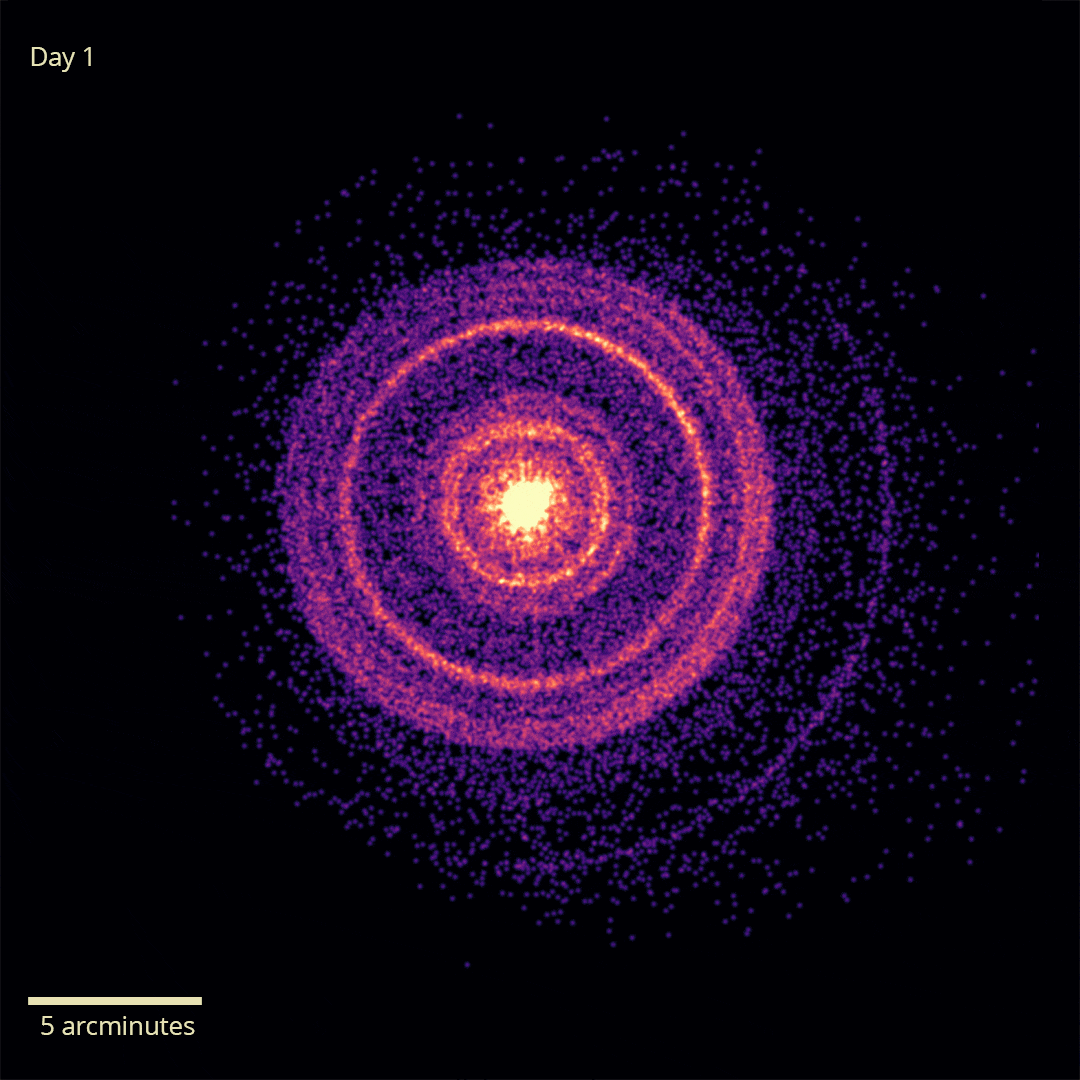Gamma-ray Bursts: Harvesting Knowledge From the Universe’s Most Powerful Explosions
The most powerful events in the known universe – gamma-ray bursts (GRBs) – are short-lived outbursts of the highest-energy light. They can erupt with a quintillion (a 10 followed by 18 zeros) times the luminosity of our Sun. Now thought to announce the births of new black holes, they were discovered by accident. The backstory […]

7 min read
Gamma-ray Bursts: Harvesting Knowledge From the Universe’s Most Powerful Explosions
The most powerful events in the known universe – gamma-ray bursts (GRBs) – are short-lived outbursts of the highest-energy light. They can erupt with a quintillion (a 10 followed by 18 zeros) times the luminosity of our Sun. Now thought to announce the births of new black holes, they were discovered by accident.

The backstory takes us to 1963, when the U.S. Air Force launched the Vela satellites to detect gamma rays from banned nuclear weapons tests. The United States had just signed a treaty with the United Kingdom and the Soviet Union to prohibit tests within Earth’s atmosphere, and the Vela satellites ensured all parties’ compliance. Instead, the satellites stumbled upon 16 gamma-ray events. By 1973, scientists could rule out that both Earth and the Sun were the sources of these brilliant eruptions. That’s when astronomers at Los Alamos National Laboratory published the first paper announcing these bursts originate beyond our solar system. Scientists at NASA’s Goddard Space Flight Center quickly confirmed the results through an X-ray detector on the IMP 6 satellite. It would take another two decades and contributions from the Italian Space Agency’s BeppoSax and NASA’s Compton Gamma-Ray Observatory to show that these outbursts occur far beyond our Milky Way galaxy, are evenly distributed across the sky, and are extraordinarily powerful. The closest GRB on record occurred more than 100 million light-years away.
Though discovered by chance, GRBs have proven invaluable for today’s researchers. These flashes of light are rich with insight on phenomena like the end of life of very massive stars or the formation of black holes in distant galaxies.
Still, there are plenty of scientific gems left to discover. In 2017, GRBs were first linked to gravitational waves – ripples in the fabric of space-time – steering us toward a better understanding of the how these events work.
The Long and Short of GRBs
Astronomers separate GRBs into two main classes: short (where the initial burst of gamma rays lasts less than two seconds) and long events (lasting two seconds or longer).
Shorter bursts also produce fewer gamma rays overall, which lead researchers to hypothesize that the two classes originated from different progenitor systems.
Astronomers now associate short bursts with the collision of either two neutron stars or a neutron star and a black hole, resulting in a black hole and a short-lived explosion. Short GRBs are sometimes followed by kilonovae, light produced by the radioactive decay of chemical elements. That decay generates even heavier elements, like gold, silver, and platinum.
Long bursts are linked to the explosive deaths of massive stars. When a high-mass star runs out of nuclear fuel, its core collapses and then rebounds, driving a shock wave outward through the star. Astronomers see this explosion as a supernova. The core may form a either a neutron star or a black hole.
In both classes, the newly born black hole beams jets in opposite directions. The jets, made of particles accelerated to near the speed of light, pierce through and eventually interact with the surrounding material, emitting gamma rays when they do.

This broad outline isn’t the last word, though. The more GRBs astronomers study, the more likely they’ll encounter events that challenge current classifications.
In August 2020, NASA’s Fermi Gamma-ray Space Telescope tracked down a second-long burst named GRB 200826A, over 6 billion light-years away. It should have fallen within the short-burst class, triggered by mergers of compact objects. However, other characteristics of this event – like the supernova it created – suggested it originated from the collapse of a massive star. Astronomers think this burst may have fizzled out before it could reach the duration typical of long bursts.
Fermi and NASA’s Neil Gehrels Swift Observatory captured its opposite number, GRB 211211A in December 2021. Located a billion light-years away, the burst lasted for about a minute. While this makes it a long GRB, it was followed by a kilonova, which suggests it was triggered by a merger. Some researchers attribute this burst’s oddities to a neutron star merging with a black hole partner.
As astronomers discover more bursts lasting several hours, there may still be a new class in the making: ultra-long GRBs. The energy created by the death of a high-mass star likely can’t sustain a burst for this long, so scientists must look to different origins.
Some think ultra-long bursts occur from newborn magnetars – neutron stars with rapid rotation rates and magnetic fields a thousand times stronger than average. Others say this new class calls for the power of the universe’s largest stellar residents, blue supergiants. Researchers continue to explore ultra-long GRBs.
Afterglows Shedding New Light
While gamma rays are the most energetic form of light, they certainly aren’t the easiest to spot. Our eyes see only a narrow band of the electromagnetic spectrum. Studying any light outside that range, like gamma rays, hinges tightly on the instruments our scientists and engineers develop. This need for technology, alongside GRBs’ already fleeting nature, made bursts more difficult to study in early years.

GRB afterglows occur when material in the jets interact with surrounding gas.
Afterglows emit radio, infrared, optical, UV, X-ray, as well as gamma-ray light, which provides more data about the original burst. Afterglows also linger for hours to days (or even years) longer than their initial explosion, creating more opportunities for discovery.
Studying afterglows became key to deducing the driving forces behind different bursts. In long bursts, as the afterglow dims, scientists eventually see the source brighten again as the underlying supernova becomes detectable.
Although light is the universe’s fastest traveler, it can’t reach us instantaneously. By the time we detect a burst, millions to billions of years may have passed, allowing us to probe some of the early universe through distant afterglows.
Bursting With Discovery
Despite the expansive research conducted so far, our understanding of GRBs is far from complete. Each new discovery adds new facets to scientists’ gamma-ray burst models.
Fermi and Swift discovered one of these revolutionary events in 2022 with GRB 221009A, a burst so bright it temporarily blinded most space-based gamma-ray instruments. A GRB of this magnitude is predicted to occur once every 10,000 years, making it likely the highest-luminosity event witnessed by human civilization. Astronomers accordingly dubbed it the brightest of all time – or the BOAT.
This is one of the nearest long burst ever seen at the time of its discovery, offering scientists a closer look at the inner workings of not only GRBs, but also the structure of the Milky Way. By peering into the BOAT, they’ve discovered radio waves missing in other models and traced X-ray reflections to map out our galaxy’s hidden dust clouds.

GRBs also connect us to one of the universe’s most sought-after messengers. Gravitational waves are invisible distortions of space-time, born from cataclysmic events like neutron-star collisions. Think of space-time as the universe’s all-encompassing blanket, with gravitational waves as ripples wafting through the material.
In 2017, Fermi spotted the gamma-ray flash of a neutron-star merger just 1.7 seconds after gravitational waves were detected from the same source. After traveling 130 million light-years, the gravitational waves reached Earth narrowly before the gamma rays, proving gravitational waves travel at the speed of light.
Scientists had never detected light and gravitational waves’ joint journey all the way to Earth. These messengers combined paint a more vivid picture of merging neutron stars.
With continued research, our ever-evolving knowledge of GRBs could unravel the unseen fabric of our universe. But the actual burst is just the tip of the iceberg. An endless bounty of information looms just beneath the surface, ready for the harvest.
By Jenna Ahart
Share
Details
Related Terms
What's Your Reaction?
















































